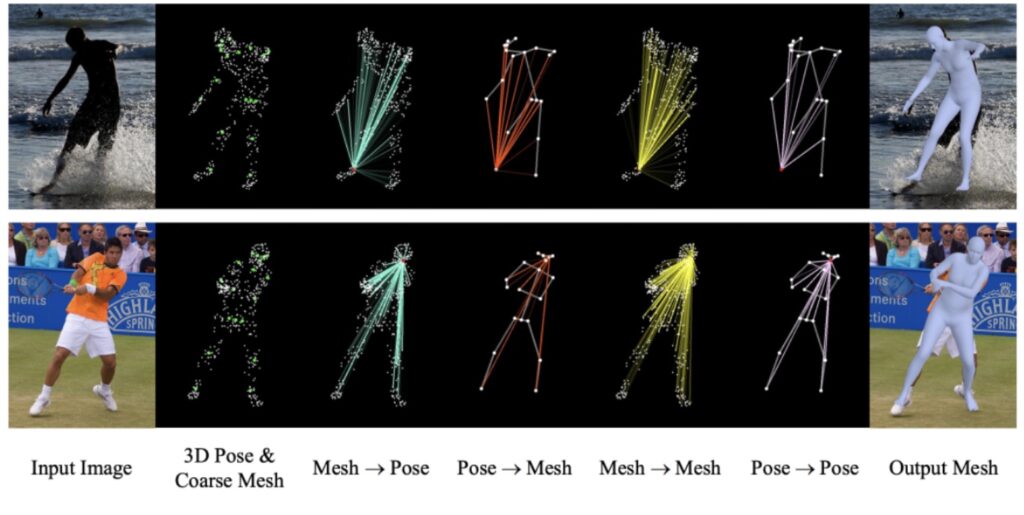1. Co-evolution of pose and mesh for 3d human body estimation from video.
Key Insight: Human mesh recovery is not just about using 3D keypoints (Pose) or 3D shapes (Mesh) alone—it’s about joint collaboration between them.

- Decoupling and co-evolution of pose estimation and mesh prediction:
Poses provide information about human motion; meshes provide information about body shape
2. World-Grounded Human Motion Recovery via Gravity-View Coordinates.
Key Insight: Use a Gravity-View (GV) Coordinate system to infer per-frame human motion, enabling robust result of world-grounded HMR from video.

- Aligning with gravity and camera view direction
- GV Coordinate system eliminates inconsistencies between coordinate systems of different frames.

3. CameraHMR: Aligning People with Perspective.
Key Insight: Integrate the predicted camera field of view (FoV) into the reconstruction pipeline, improves HMR in monocular images with severe perspective distortion.

- HumanFoV: Predicts the FoV directly from the input image.
- CamSMPLify: Incorporates the predicted FoV into a full perspective camera model, replacing the traditional weak-perspective assumption.
- CameraHMR: Improves the original HMR2.0 architecture by integrating the camera intrinsics predicted by HumanFoV.
[References]
- You, Yingxuan, et al. “Co-evolution of pose and mesh for 3d human body estimation from video.” Proceedings of the IEEE/CVF International Conference on Computer Vision. 2023.
- Shen, Zehong, et al. “World-Grounded Human Motion Recovery via Gravity-View Coordinates.” SIGGRAPH Asia 2024 Conference Papers. 2024.
- Patel, Priyanka, and Michael J. Black. “CameraHMR: Aligning People with Perspective.” arXiv preprint arXiv:2411.08128 (2024).
